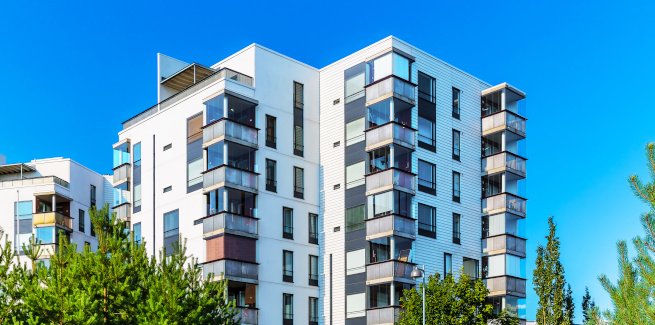Loss of income and travel restrictions due to the coronavirus pandemic have led to excess stock levels in Melbourne and Sydney, where advertised stock increased nearly 60 per cent between March and June.
The latest ANZ CoreLogic Housing Affordability report has shown that inner Melbourne recorded a 57 per cent increase in advertised rental properties while Sydney’s city and inner south both record a 53 per cent jump.
All other capital cities saw a drop in total rental listings.
ANZ economist Felicity Emmett has said the fall in demand for rental properties in inner Melbourne and Sydney was due to their “service economies”, which were the worst affected sectors of the coronavirus pandemic. This was largley due to the fact that many were forced to shut down to comply with the government’s social distancing measures to curb the spread of COVID-19.
Ms Emmett said “nearly 40 per cent of people who work in the accommodation and food services sectors rent,” adding that – between the weeks ending 14 March and 27 June – 21 per cent of hospitality workers lost their jobs, compared to an average of 6 per cent across all industries.
Ms Emmett also observed that the lack of overseas migration has also contributed to the drop in demand, as approximately 80 per cent of newly arrived migrants rent their accomodation.
“This drop-off in demand will impact regions popular with migrants, including inner city and south-eastern Melbourne, and inner south west Sydney,” Ms Emmett said.
The oversupply of inner-city properties has reduced rental values by as much as 7 per cent in suburbs such as Haymarket and Barangaroo in Sydney, and Southbank in Melbourne, the affordability report found.
CoreLogic head of research, Eliza Owen, said that while the drop in demand for rental properties would work in favour of tenants seeking rent reductions, landlords should not panic.
“The oversupply of rental stock since March has been largely confined to inner city areas in Melbourne and Sydney, while all other capital cities have experienced a decline,” Ms Owen said.
“There are still opportunities for investors where rental markets have continued to tighten and rental values have increased, including select suburbs across Perth and Hobart where Airbnb stock may be reverted back to the short-term rental market as [interstate] travel resumes.”
Property investor participation
The report also drew a link between demand for rental property and investor participation in the housing market.
Ms Owen stated that, before the onset of COVID-19, investor participation in the housing market was at its lowest since 2001. Investor finance fell sharply over April and May due to high levels of uncertainty, she added.
“If sustained, this suggests that the decline in demand for rentals could be partially offset by a decline in the supply of rental property,” Ms Owen said.
According to the report, there was a slow reversal of earlier trends during much of 2019 and early 2020. Investors withdrew from the housing market in response to tightening lending conditions brought in to limit potentially risky housing lending.
In September 2017, APRA implemented a 30 per cent cap on the share of banks’ new lending that was interest only, a loan structure mostly used by investors.
The report said it was “fortunate” that investor participation in the hosing market had been correcting from very high levels in the lead up to COVID-19. This means that more property was being purchased by owner-occupiers who are less likely to sell property assets amid economic uncertainty.
This reduces some overall risk to the property market.
“If investor participation remains low, this could keep rental market conditions relatively steady,” the report said.
“It signals that the [fallaway] in demand will be met with less new supply.”
[Related: Housing market to withstand jobless surge: PIPA]
 ;
;
